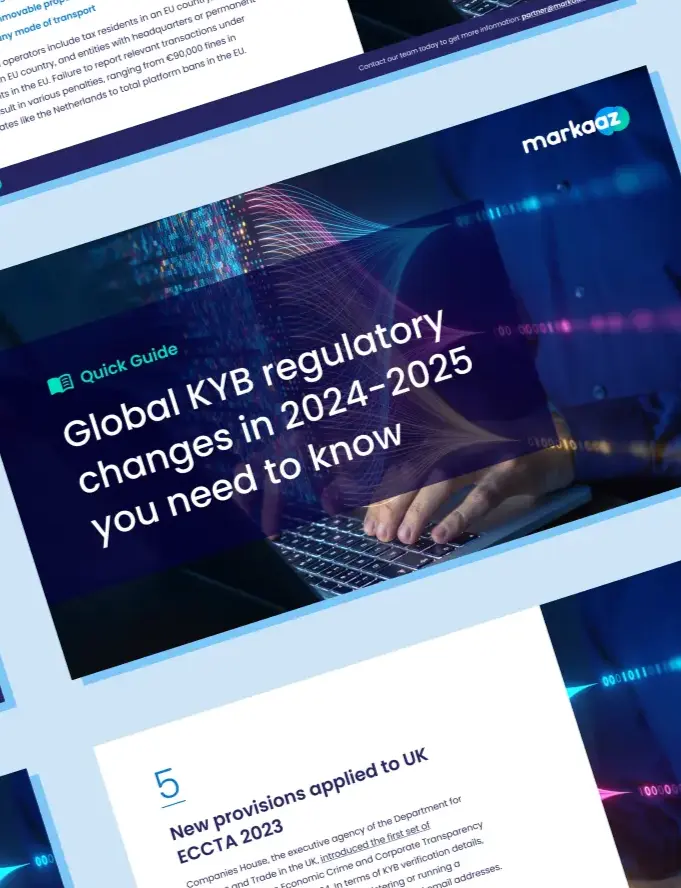How are business credit and risk scores calculated for an overall look at business health?
For any business owner, it’s essential to establish business credit. It’s an excellent way to improve your insurance rates, acquire competitive loans, and even protect your individual credit. Business credit risk scores are also essential to understand, especially for a B2B enterprise wanting to onboard businesses.
Today, we will be going into detail about how both business credit scores and business credit risk scores are calculated. This is a great way to determine business health for any company that signs up as an enterprise customer. Once you have that information, you can move forward with providing credit or products, knowing that your business customer is highly likely to keep up with payments.
We’ll share what each of these scores is all about and why both are crucial to have available for your business. We’ll also explain how the scores are calculated and what you can use them for. The article will also give you details on obtaining this information quickly and simply.
All about business credit scores
Lines of credit, credit cards, and loans are all essential to expand capital for a business and help a business grow. The extra money can be used to expand operations, purchase inventory, and more. The credit score of a business impact how much these debts cost and how much money a business can borrow.
For a B2B enterprise with business clients, knowing their business credit score lets you know whether you should lend to them and, if so, how much money you should offer. It can be used to decide on the exact terms for each business customer.
When it comes to business health, credit scores are one of the most important things to be aware of. Thankfully, numerous companies offer this information. These include our partner Equifax, as well as Experian, Dun & Bradstreet, and others. All of these agencies collect the credit data in different ways, but all implement the same factors, including:
- Industry risk
- Payment history
- Credit account age
- Company size
- Debt usage
So where does this data come from? There are several sources. Reporting agencies get information from business credit card providers, data-gathering trade associations, vendors, banks, and credit unions.
With Equifax, there is a payment index score. It ranges from zero to 100; all data comes from trade records, business lenders, and public records.
Equifax will analyze the payment history of a company over the last year. Companies that always pay on time and in full can expect a score between 90 and 100. However, being past due even once will knock the score down to the 80 to 89 range.
Other agencies have different scoring methods, but all have the same idea behind them. You can get the information you need about other companies to determine their business health score. This data is up-to-date and reliable, so you can use it as a part of your decision-making process when working with new companies. It’s an easy way to avoid making bad choices based on a lack of data.
With Markaaz’s Business Verification and Business Decisioning API Suites, business health data, including business credit scores and business risk scores, is checked, verified, and combined with firmographic data and compliance/AML data to give onboarding teams a holistic picture of whether this business is a strong onboarding match.
What to know about business credit risk scores

In addition to business credit scores, enterprises should be aware of business credit risk scores. When you look at a credit risk score, you get details about whether a company is likely to be risky in the future. The credit profile of the company is used to make this determination.
So, if you have a business customer come in with a great score, approving them makes a lot of sense. These are the businesses that you want and will hopefully stick around since they have minimal risk. On the other hand, a high-risk score may mean declining a business as a customer.
Several factors play into scoring credit risk for a company. The five most common include the following:
- Capacity to repay – This looks at how likely a borrower is to repay a loan. It’s often based on the debt-to-income ratio and how well a company does at paying off debts from earnings.
- Capital – A company’s net worth may also go into calculating credit risk. This is a simple process of taking the total assets and subtracting any debts or liabilities.
- Collateral – Available collateral will play into a company’s credit risk. If the collateral is put up for a loan, the deal becomes less risky for you as a lender.
- Conditions of the loan – The loan conditions are also essential to consider when determining credit risk. The conditions and terms may vary based on the customer.
- Credit history – Credit history is an essential part of the calculation. Looking into the borrower’s background and credit scores helps determine credit risk.
Every agency can choose the way they calculate and display business credit risk. When it comes to Equifax, the credit risk considers credit limits, credit history, and company size to determine whether the business can keep up payments or are more likely to fall behind.
Higher scores are preferred when you look at the numerical business credit risk. These are the companies that have a lower risk than others. Lower scores should be scrutinized before choosing to fund. If the score is zero on the scale, this typically indicates bankruptcy.
Another aspect of the Equifax scoring system is its business failure score. This gives insight into how likely it is that a business will fail over the next year, whether formally, informally, or through bankruptcy. Higher scores are better, as with the other factors we’ve discussed. Zero scores are associated with bankruptcy.
Looking at the business failure score of a company gives insight into how much credit it uses and whether there have been late payments in the past. It works in tandem with business credit risk and business credit score for a more nuanced understanding of how well the company is doing.
Final thoughts
Scoring models among reporting agencies vary, but all of them can be used to see how risky it is to do business with a specific company. For instance, each of them will look at how successful a business is at making timely payments and consider how much credit it is using at the current time.
Calculating overall business health for a company is something that can help an enterprise succeed. You get the information you need to decide which brands and organizations to work with while avoiding potential failure and payment issues. This can be done manually, or let Markaaz’s automated, easily integrated Business Verification and Decisioning API Suites do it for your onboarding team.
There are many ways to mitigate risk for your enterprise. You can take measures to control or reduce uncertainties, accept and prepare for risk, or avoid anything considered an elevated risk. With the help of business health data, it’s much easier to decide whether to move forward or take a step back with a new or continuing client.
Talk to our team and learn more about how we can help you succeed.



